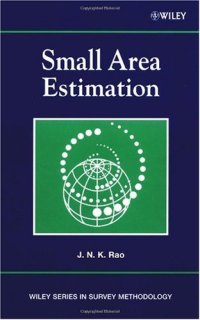
Ebook: Small area estimation
Author: J. N. K. Rao
- Year: 2003
- Publisher: Wiley-Interscience
- City: Orlando
- Edition: 1
- Language: English
- pdf
The term "small area" denotes any subpopulation for which direct estimates of adequate precision cannot be produced. In recent years, the demand for reliable small area estimates has greatly increased worldwide due to, among other things, their growing use in formulating policies and programs and the allocation of government funds; regional planning; small business decisions; and similar applications.
Small Area Estimation provides a comprehensive account of the methods and theory of small area estimation, particularly indirect estimation based on explicit small area linking models. The model-based approach to small area estimation offers several advantages, including increased precision, the derivation of "optimal" estimates and associated measures of variability under an assumed model, and the validation of models from the sample data.
The clear, detailed coverage includes:
- Basic terminology related to small area estimation
- Survey design issues and traditional methods employing indirect estimates based on implicit linking models
- Linear mixed models and generalized linear mixed models
- Empirical Best Linear Unbiased Prediction (EBLUP), Empirical Bayes (EB) and Hierarchical Bayes (HB) Estimation
- Model diagnostics
- Various extensions including binary response and count data through generalized linear mixed models and time series data through linear mixed models that combine cross-sectional and time series features
- Important applications of SAE including several in U.S. federal programs